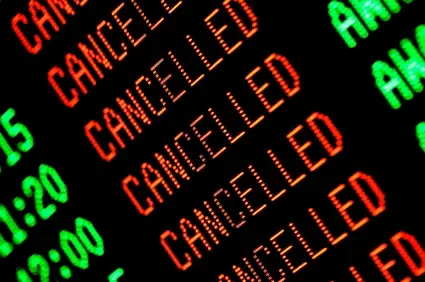
No, that’s not a headline from The Onion. Department of Transportation (DOT) Secretary Ray LaHood said his agency plans to establish a panel that will create what he calls a “roadmap for the future of the airline industry.” Speaking at a forum of airlines executives, he said he expects the panel to produce this roadmap within a year.
At the center of this, of course, is an industry in dire straits. Airlines have been losing money for years, with 19 bankruptcies and an estimated $30 to $60 million shortfall in the past decade. The future looks bleak as well, with numerous carriers desperately cutting back service in an effort to align their supply with retreating demand.
But the “roadmap,” such as it is, will likely focus on a singular issue: Determining who pays for NextGen, a sorely needed replacement for our nation’s antiquated air traffic control system (think World War II). NextGen is seen as something of a silver bullet for the industry’s ails—it should cut down on congestion and delays, reduce greenhouse gases, and pare down fuel costs. Estimates put the bill for NextGen at between $15 and $22 billion for upgrades or replacements for existing infrastructure, and another $14 to $20 billion for new equipment on individual aircraft. The problem is with this latter expense: The Federal Aviation Administration thinks the airlines should foot the bill, but the airlines are crying poor.
Further, there is an emerging sense in Washington that the airlines’ business model is a bit, shall we say, flawed. This sentiment seems to apply mostly to the larger legacy airlines, which happen to be the ones struggling the most. Whispers of regulation and increased taxes (meant, in part, to help pay for NextGen) even prompted US Airways CEO Doug Parker to write a letter to LaHood, effectively asking him to let the airlines figure out their own mess. “Our request,” he writes, “is to simply let us run our businesses, continuing on the path of progress we have already successfully begun.
“In short, our request of the Administration as it relates to U.S. aviation is ‘Do No Harm.’ The ‘Do No Harm’ prescription means two things as it relates to aviation policy. First, please do not impose any additional taxes, fees or unfunded mandates on this already over-taxed industry. Second, please allow us the ability to fix our industry through rational business decisions and actions and self-help mechanisms.”
Parker also notes that many are predicting the industry will turn a small profit next year, and suggests government intervention would derail any positive gains. But as he begs to be left alone, Parker is also making a case for the exact opposite. He praises NextGen, saying it would “yield enormous benefits to consumers through reduced congestion” and “reduce carbon emissions significantly by shortening flight times,” and says the industry is “extremely supportive of its implementation.”
“However,” he writes, “if the cost of deploying NextGen has to be covered by even higher taxes or fees imposed on the airlines, we prefer to live without it at the current time.”
In short, we don’t care, so long as it’s free.
It probably does’t help Parker’s case that, in the same letter, he spells out the ways in which his industry has failed miserably: “The U.S. airline industry has lost nearly $60 billion since 2001, with $27 billion of those losses coming during the oil price spike and the global recession suffered in 2008 and 2009. As a result, most of the major airlines have borrowed heavily against their assets and business relationships and have little or no ability to raise additional capital. If we want a healthy and competitive airline business, we simply must figure out a way to make our industry profitable over the long term so we can attract new capital over time.”
Yes, the industry has dealt with some rough patches lately, but the “long term” Parker dreams about simply isn’t realistic. Our air traffic control system needed to be replaced yesterday. It is, with no exaggeration, the industry’s crucial issue. Considering the benefits airlines stand to gain, both in terms of savings and operational efficiency—not to mention a better experience for their customers—executives like Parker should be figuring out how to pay for it now, not at some point in the unknowable future.
Revamping air traffic control has been a priority of the Obama administration from day one, and LaHood’s forum, which was requested by airline unions frustrated by the industry’s struggles, was a first step. Now the real work begins. And something tells me the airline’s suggestion so far—that the government should pay for it all—will be respectfully dismissed.
We hand-pick everything we recommend and select items through testing and reviews. Some products are sent to us free of charge with no incentive to offer a favorable review. We offer our unbiased opinions and do not accept compensation to review products. All items are in stock and prices are accurate at the time of publication. If you buy something through our links, we may earn a commission.
Related
Top Fares From
Today's Top Travel Deals
Brought to you by ShermansTravel
Porto to Lisbon: 7-Nt, Small-Group Portugal...
Indus Travels
 vacation
$1899+
vacation
$1899+
Greenland: Luxe, All-Incl. 11-Nt Exploration Small-Ship...
Swan Hellenic



Ohio: Daily Car Rentals from Cincinnati
85OFF.com





